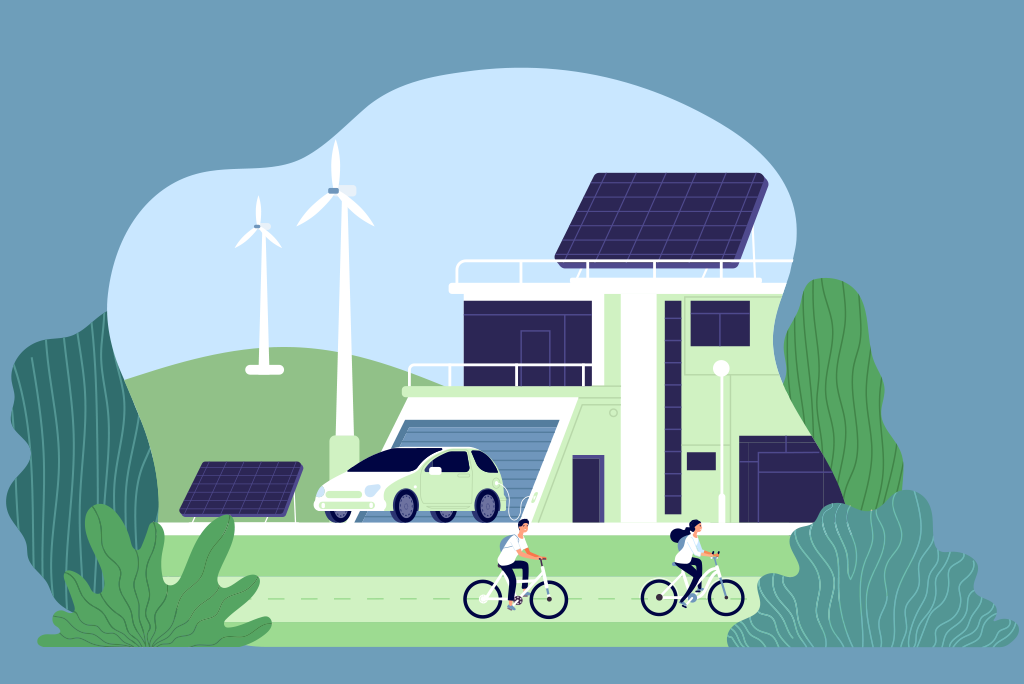
As the COVID-19 pandemic shut down cities around the world, and major transportation systems slowed to a crawl, pollution levels plummeted by around 50% in Delhi, India, according to a recent report from the Massachusetts Institute of Technology. The researchers found an 8% increase in solar panel energy production as a result of clearer, less polluted skies in the region.
The energy production fluctuations were much larger than what’s been recorded in recent years—about three to four times higher. While the findings may not be surprising considering the significant drop in pollution, the researchers say their study was the first to show how reductions in pollution can impact the productivity of solar panels.
Without intentional commitment to lower pollution levels, these clearer skies aren’t likely to last long term. Furthermore, advancements in renewable technology are still necessary to fight climate change. Research teams are working hard to develop groundbreaking renewable technologies in order to help overcome complex challenges in the field.
Scientists Create Hybrid Solar Energy Converters that Capture Entire Spectrum of Sun
A team of scientists led by professors from Tulane University and the University of San Diego have created a highly efficient hybrid solar energy converter that produces electricity and steam at reduced cost.
The converter produces electricity from extremely efficient multi-junction solar cells that divert the sun’s infrared rays to a thermal receiver, allowing the converter to capture the sun’s entire spectrum. The thermal energy can be used as needed, whether it’s stored for the future or for immediate commercial use.
“Thermal energy consumption is a huge piece of the global energy economy—much larger than electricity use,” one of the lead researchers, Matthew Escarra, told Science Daily. “There has been a rising interest in solar combined heat and power systems to deliver both electricity and process heat for zero-net-energy and greenhouse-gas-free development.”
Recent Innovation in Battery Technology Could Give Big Boost to Electric Vehicles
Electric vehicles have gained much attention as green alternatives to their gas guzzling counterparts. However, until they can be equipped with batteries that can power them over long distances without having to recharge, they’re heavily dependent on the available charging station infrastructure.
Thanks to a recent innovation from researchers at the U.S. Department of Energy’s Lawrence Berkeley National Laboratory and Carnegie Mellon University, rechargeable batteries may soon get the jump-start they need.
In the past, scientists have tried to replace graphite anodes with lithium metal anodes in batteries, which could increase the distance a vehicle could travel by as much as 50%. However, there’s a major obstacle: graphite anodes create branch-shaped irregularities within battery cells called “lithium dendrites,” which grow during charging and discharging periods.
Previously, scientists thought that solid electrolytes like those constructed from ceramics could prevent the growth of these irregularities. However, while the solid electrolytes did prevent dendrites in the later stages, they did not prevent them from forming early on.
The team discovered that soft and solid electrolytes, constructed from a mix of soft polymers and ceramics, could prevent dendrites from forming to begin with, according to their study published in the Nature Materials. However, their innovation still needs to surmount challenges posed by multiple materials and processing.
“Our dendrite-suppressing technology has exciting implications for the battery industry,” Brett Helms, a staff scientist in Berkeley Lab’s Molecular Foundry and study co-author, told the Berkeley Lab News Center. “With it, battery manufacturers can produce safer lithium metal batteries with both high energy density and a long cycle life.”
While renewable energy still has a way to go, breakthroughs such as these demonstrate how engineers can use innovation to overcome major challenges.
Understanding Distributed Energy Resources
Leveraging distributed energy resources (DERs) and microgrids can help countries reach their green energy goals.
An six-course program available online, Introduction to IEEE Std 1547-2018: Connecting Distributed Energy Resources focuses on IEEE Standard 1547-2018™. This standard provides technical specifications for interconnection and interoperability between utility electric power systems (EPSs) and distributed energy resources. It also provides requirements relevant to the performance, operation, testing, safety considerations, and maintenance of the interconnection.
Contact an IEEE Content Specialist today to learn more about getting access to these courses for your organization.
Do you want to learn more about Standard 1547 for yourself? Visit the IEEE Learning Network.
Resources
Massachusetts Institute of Technology. (22 July 2020). COVID-19 shutdown led to increased solar power output. Science Daily.
Duque, Theresa. (20 July 2020). Battery Breakthrough Gives Boost to Electric Flight and Long-Range Electric Cars. Berkeley Lab News Center.
Tulane University. (15 July 2020). Scientists build high-performing hybrid solar energy converter. Science Daily.


This article was so informative and nice thanks for sharing that deep research battery i hope to see this type of more articles in future.